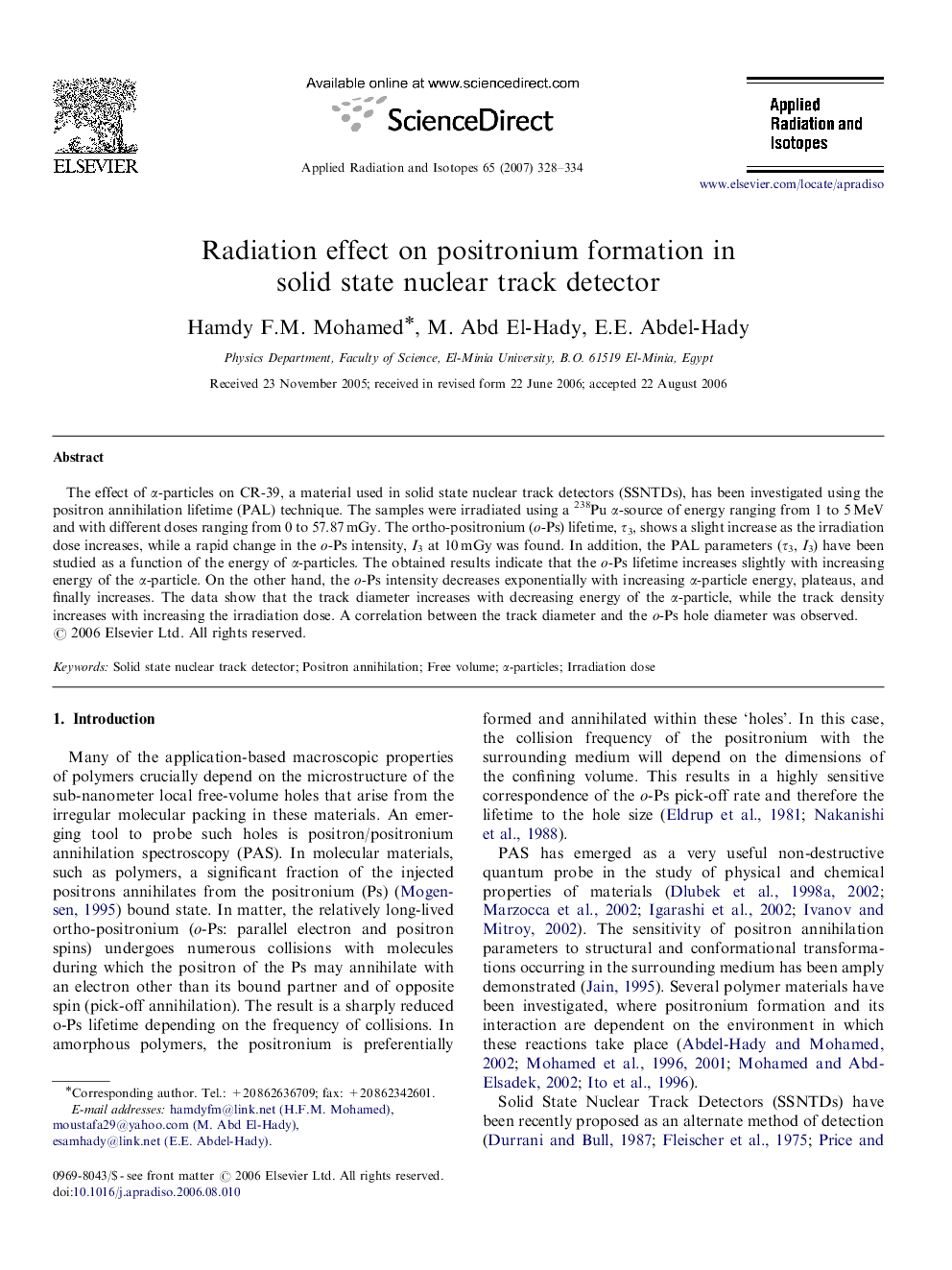| Article ID | Journal | Published Year | Pages | File Type |
|---|---|---|---|---|
| 1877253 | Applied Radiation and Isotopes | 2007 | 7 Pages |
Abstract
The effect of α-particles on CR-39, a material used in solid state nuclear track detectors (SSNTDs), has been investigated using the positron annihilation lifetime (PAL) technique. The samples were irradiated using a 238Pu α-source of energy ranging from 1 to 5 MeV and with different doses ranging from 0 to 57.87 mGy. The ortho-positronium (o-Ps) lifetime, Ï3, shows a slight increase as the irradiation dose increases, while a rapid change in the o-Ps intensity, I3 at 10 mGy was found. In addition, the PAL parameters (Ï3, I3) have been studied as a function of the energy of α-particles. The obtained results indicate that the o-Ps lifetime increases slightly with increasing energy of the α-particle. On the other hand, the o-Ps intensity decreases exponentially with increasing α-particle energy, plateaus, and finally increases. The data show that the track diameter increases with decreasing energy of the α-particle, while the track density increases with increasing the irradiation dose. A correlation between the track diameter and the o-Ps hole diameter was observed.
Keywords
Related Topics
Physical Sciences and Engineering
Physics and Astronomy
Radiation
Authors
Hamdy F.M. Mohamed, M. Abd El-Hady, E.E. Abdel-Hady,
